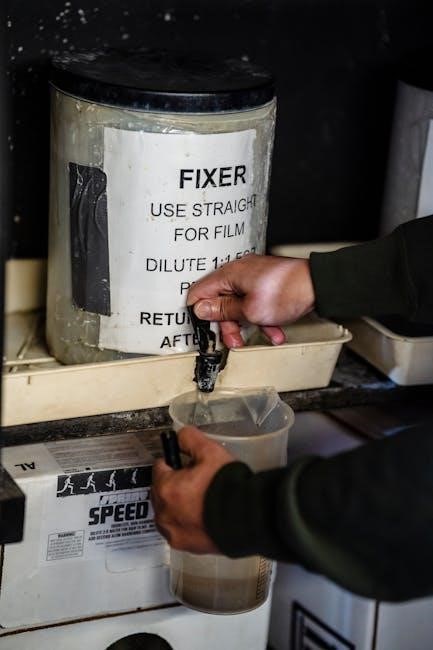Labeling 2-2 Reference Manual Answers: A Comprehensive Guide
This comprehensive guide delves into answering questions related to Labeling 2-2 Reference Manual exercises. It provides clarity and support for healthcare professionals seeking to understand the manual’s content and applications effectively.
Understanding the Basics of Labeling 2-2
Grasping the core principles of Labeling 2-2 is crucial for healthcare professionals aiming to accurately interpret laboratory test information. This labeling exercise, often found in reference manuals, focuses on identifying key components of a laboratory test description. These elements could include specimen processing precautions, CPT codes for billing, and the appropriate evacuated tube to use for collection.
By understanding these basics, users can effectively decipher what the reference manual communicates about a specific lab test. This involves recognizing the specimen type, the recommended collection method, and any special handling instructions. Mastering Labeling 2-2 ensures accurate application of laboratory procedures and contributes to overall quality assurance in healthcare settings. Correctly identifying each numbered item within the underlined portion of the manual page is paramount for proper interpretation and application of the information.

Key Components of a Reference Manual
Reference manuals contain crucial elements, including specimen handling, billing codes, and tube usage. Understanding these components ensures accurate lab procedures and informed healthcare decisions by practitioners and stakeholders alike.
Identifying Numbered Items in Labeling Exercises
When tackling Labeling 2-2 exercises, understanding the numbered items is paramount. These items often refer to critical aspects of a lab test, guiding the reader through essential information. Each number corresponds to a specific detail, such as specimen processing precautions, CPT codes for billing, or the appropriate evacuated tube to use.
The reference manual utilizes these numbered sections to convey information clearly and concisely. By identifying what each number signifies, users can accurately interpret the manual’s guidance. For example, a numbered item may describe the materials needed for a specific test, or the steps necessary for proper specimen preparation.
Effectively decoding these numbered items enhances the user’s ability to perform laboratory tests correctly and efficiently. Ultimately, accurate identification leads to improved patient care and reliable test results, mitigating potential errors in the lab environment.
Specimen Processing Precautions
Specimen processing precautions are paramount in maintaining the integrity of laboratory results and ensuring patient safety. These precautions, often detailed in Labeling 2-2 reference manuals, outline critical steps to prevent contamination, degradation, or misidentification of samples. Adhering to these guidelines is essential for accurate diagnostic testing.
Common precautions include wearing appropriate personal protective equipment (PPE), such as gloves and lab coats, to minimize exposure to potentially infectious materials. Proper labeling of specimens is also crucial, ensuring clear identification throughout the processing stages. Temperature control is another vital consideration, as certain specimens require specific storage conditions to maintain their stability.
Furthermore, the manual details procedures for handling various specimen types, addressing specific requirements for blood, urine, and tissue samples. Waste disposal protocols are also emphasized, ensuring compliance with safety regulations and minimizing the risk of environmental contamination. By meticulously following these specimen processing precautions, laboratories can uphold quality standards and deliver reliable results.
CPT Code for Billing Purposes
Understanding CPT (Current Procedural Terminology) codes is essential for accurate billing in healthcare. The Labeling 2-2 reference manual often includes specific CPT codes associated with various laboratory tests. These codes are used to standardize billing processes, ensuring that healthcare providers are properly reimbursed for the services they provide. Utilizing the correct CPT code is crucial for avoiding claim denials and ensuring financial compliance.
The reference manual will typically detail which CPT code corresponds to each test performed in the lab, including any associated modifiers. These codes are updated regularly, so it is vital to consult the most recent version of the manual and any relevant updates from the American Medical Association (AMA), which maintains the CPT code set.
Furthermore, the manual may provide guidance on proper documentation to support the use of specific CPT codes. This documentation ensures that the services billed are medically necessary and accurately reflect the work performed. Proper use of CPT codes is critical for both financial stability and compliance within the healthcare setting.
Evacuated Tube Usage
The Labeling 2-2 reference manual provides crucial details regarding evacuated tube usage in laboratory settings. Correct usage is paramount for accurate test results and patient safety. The manual will specify which tube types are appropriate for specific laboratory tests, considering factors like additives, fill volumes, and order of draw. Each evacuated tube contains specific additives, such as anticoagulants or clot activators, tailored to the requirements of particular assays.
The manual outlines the correct order of draw to prevent cross-contamination between tubes, ensuring accurate results. Improper tube selection or order of draw can lead to erroneous results, potentially impacting patient care.
Furthermore, the reference manual includes guidelines for proper tube handling, storage, and disposal. These guidelines help maintain sample integrity and prevent biohazards. Training and adherence to the manual’s protocols are essential for all laboratory personnel to minimize errors and maintain high-quality standards in specimen collection and processing. The information supports accurate diagnostics and effective patient management.

Quality Assurance and Legal Issues
This section addresses the critical intersection of quality assurance protocols and legal compliance within laboratory practices. It emphasizes documentation standards, regulatory requirements, and risk management strategies to ensure accurate and legally sound laboratory operations.
Documentation Requirements and Standards
Comprehensive documentation is paramount in maintaining quality assurance and adhering to legal standards within a laboratory setting. This includes meticulous record-keeping of all procedures, from specimen collection to test interpretation. Labeling protocols must be strictly followed, ensuring accurate identification and traceability of samples throughout the entire process. Reference manuals serve as vital guides, providing standardized procedures and interpretive criteria that must be consistently applied and documented.
Specific attention should be paid to documenting any deviations from standard operating procedures, including the rationale for the deviation and the potential impact on test results. Proper documentation also encompasses equipment maintenance logs, quality control data, and personnel training records, all contributing to a comprehensive audit trail. Clear, legible, and readily accessible documentation demonstrates compliance with regulatory requirements and best practices, mitigating potential legal risks. Furthermore, adherence to established documentation standards facilitates effective communication among laboratory staff, ensuring consistent and reliable results. This commitment to thorough documentation strengthens the integrity of laboratory operations and safeguards patient safety.

Laboratory Test Interpretation
Accurate laboratory test interpretation is crucial for effective patient care. Reference manuals provide essential guidance, aiding in understanding test results within the context of patient history and clinical presentation, ensuring informed medical decisions.
What the Reference Manual Tells the Reader
The reference manual serves as a critical resource, informing the reader about numerous aspects of laboratory testing. Primarily, it elucidates the specifics of each test, detailing what analytes are detected or measured, and their clinical significance. The manual outlines the intended function of each test, clarifying whether it serves a screening, diagnostic, or monitoring purpose.
Furthermore, the manual provides crucial instructions on proper specimen collection techniques, including the type of specimen required, appropriate collection methods, and necessary precautions to ensure accurate results. It also specifies the correct evacuated tube to use for sample collection. The reader is also informed about the CPT code for billing purposes, ensuring accurate and compliant billing practices.
The manual addresses specimen processing precautions, highlighting steps to prevent contamination or degradation of the sample, safeguarding the integrity of the results. It further provides reference ranges for test results, enabling the reader to interpret results accurately relative to established norms. This detailed information empowers healthcare professionals to make informed clinical decisions based on reliable and standardized laboratory data.
Specimen Type and Collection Method
This section of the reference manual meticulously details the required specimen type for each laboratory test, ensuring accurate and reliable results. It specifies whether the test requires blood (whole blood, serum, or plasma), urine, or other bodily fluids, and provides precise instructions on the appropriate collection method for each specimen type.
For blood specimens, the manual dictates the correct order of draw to prevent cross-contamination between different collection tubes. It outlines the recommended anticoagulants or preservatives to use for specific tests, ensuring optimal sample integrity. Detailed instructions for venipuncture, including site selection, proper needle insertion techniques, and the use of appropriate collection devices, are provided to minimize patient discomfort and reduce the risk of pre-analytical errors.
For urine specimens, the manual clarifies whether a random, first morning, timed, or clean-catch midstream sample is required. Detailed collection procedures are outlined to prevent contamination and ensure accurate results. The manual also addresses proper specimen labeling procedures, emphasizing the importance of accurate patient identification and test requisition information.

Troubleshooting and FAQs
This section addresses common issues and frequently asked questions regarding the Labeling 2-2 Reference Manual. Find quick solutions and clarifications to ensure accurate and efficient laboratory practices.
Addressing Common Questions and Concerns
This section directly addresses frequently asked questions and prevalent concerns surrounding the “Labeling 2-2 Reference Manual.” It aims to provide clear, concise answers and practical guidance to alleviate confusion and promote accurate interpretation of the manual’s contents.
Common questions often revolve around the correct application of specimen processing precautions, clarification of CPT codes for billing, and appropriate evacuated tube usage based on the manual’s guidelines. We aim to offer detailed explanations and illustrative examples to enhance understanding.
Concerns regarding documentation requirements and adherence to quality assurance standards are also addressed, ensuring users are well-informed about maintaining compliance. Furthermore, we tackle issues related to test interpretation, emphasizing how the reference manual can be effectively utilized to derive meaningful insights from laboratory results.
This FAQ section is designed to be a valuable resource, empowering users to confidently navigate the complexities of laboratory procedures and ensure accurate, reliable outcomes. The goal is to promote best practices and address any uncertainties that may arise during the application of the Labeling 2-2 Reference Manual.
Related Resources and Documentation
This section provides links and references to supplemental materials, including relevant laws, regulations, and other instructional manuals. These resources offer additional context and support for effectively using the Labeling 2-2 Reference Manual.
Referencing Laws, Regulations, and Other Manuals
Accurate labeling practices are crucial for compliance with healthcare regulations. This involves referencing specific laws, such as those pertaining to specimen handling and patient data protection. Consult relevant regulatory bodies’ guidelines for up-to-date information.
Referencing other manuals, such as those detailing phlebotomy procedures or laboratory safety protocols, provides a comprehensive understanding. Cross-referencing ensures adherence to industry standards.
Proper documentation, including accurate labeling and record-keeping, is essential for legal and ethical reasons. Use the reference manual in conjunction with other resources to confirm best practices.
Always consult the most current versions of laws, regulations, and manuals to ensure compliance. Understanding the legal and regulatory landscape is vital for avoiding errors and maintaining patient safety. This section emphasizes the importance of referencing external materials.
